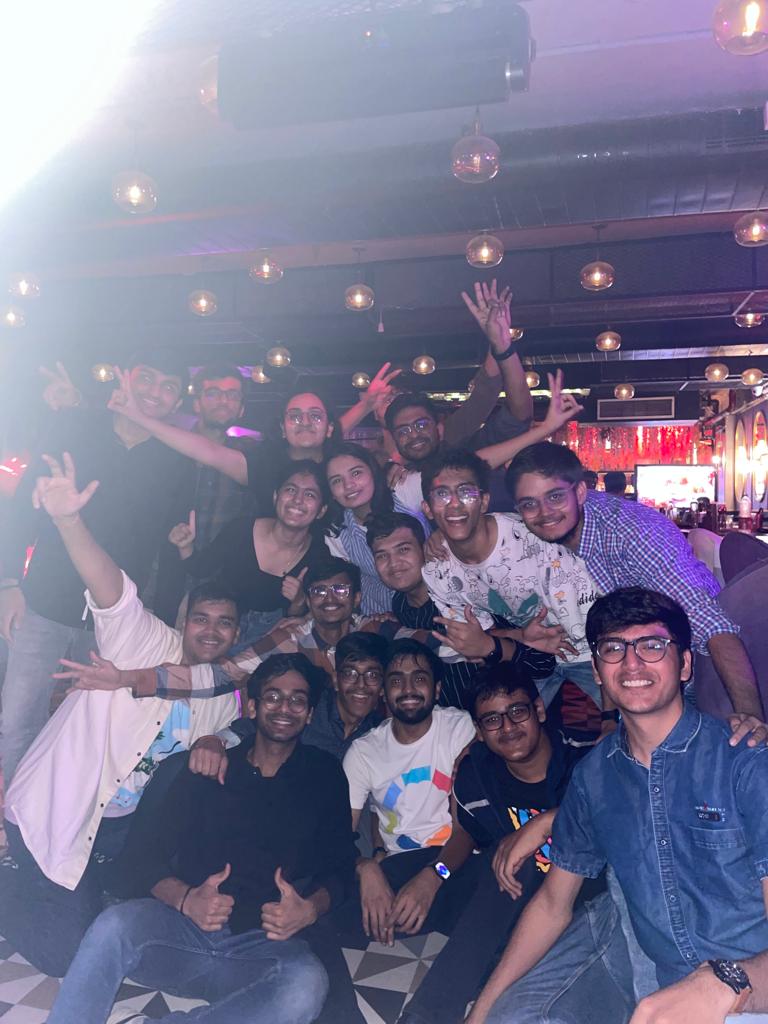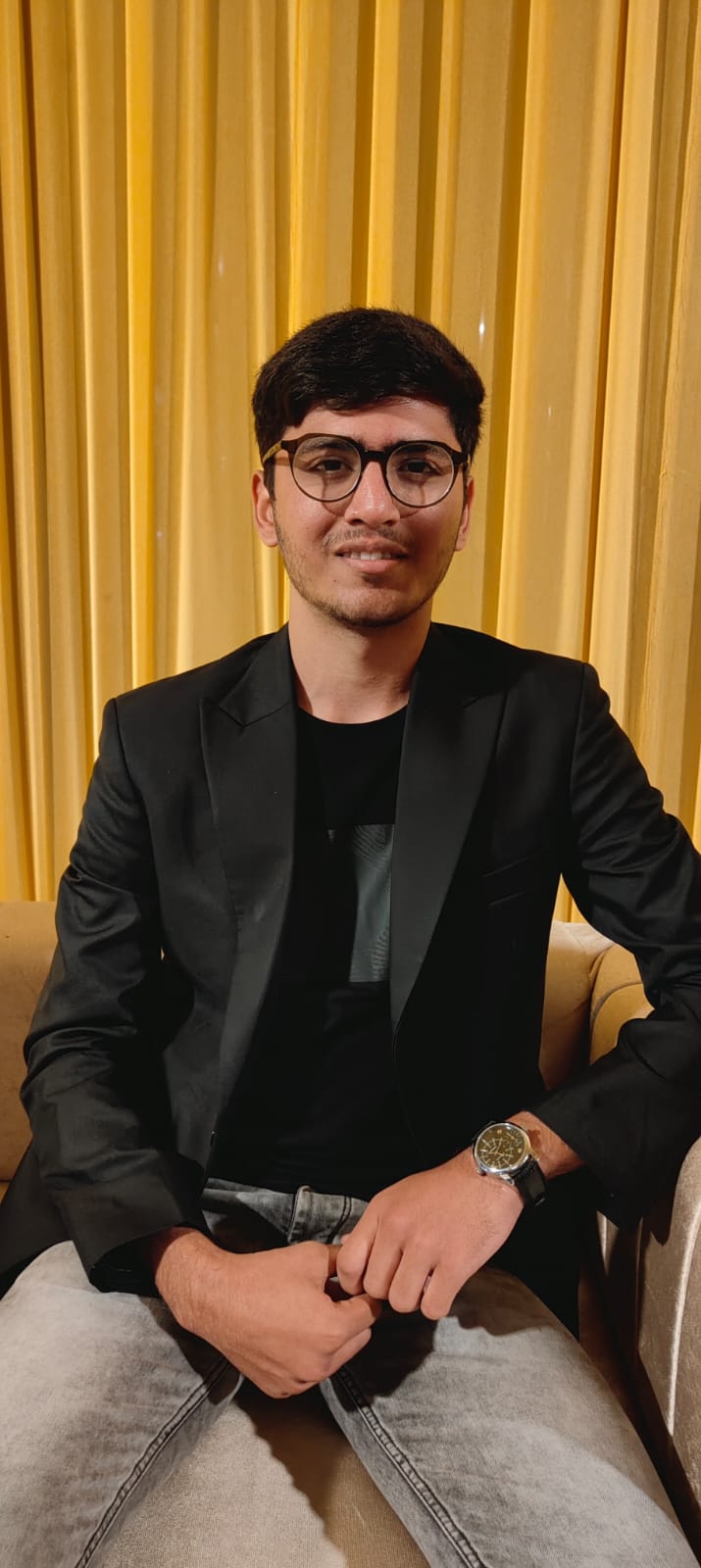This article presents two succinct approaches to its subject. The first approach entails an in-depth exploration of the procedural methods employed by the RDV IITD Marketing team. The second approach involves interviews with individuals who have achieved remarkable success in raising substantial funds for the festival, shedding light on the underlying intricacies beyond the superficial allure of fest marketing.
The second approach has been selected for this article, as it offers a deeper level of analysis. Firstly, it should be noted that this method is atypical; it deviates from standard experimental procedures that typically aim for replicable results. The unique creativity involved is best exemplified through real-world case studies. Secondly, an attempt was made to follow the first approach, but it proved to be monotonous. However, for those seeking a precise, step-by-step guide, such a recipe can be found at the conclusion of this article.
A Brief Overview:
- RDV IITD stands as the largest cultural fest in Asia (noting the ongoing debate regarding MoodI and RDV, let us avoid that discussion). This year, the fest's marketing team raised an impressive sum of 1.61 crore rupees within a mere five months following the conclusion of the previous RDV, which was held on March 23. The emergence of the COVID-19 pandemic disrupted the event's scheduling, making it an exceptionally challenging undertaking for the organizing committee.
- Kush Jain, a third-year student within the Department of Mathematics pursuing a BTech in Mathematics and Computing at IITD, served as the Marketing Coordinator for RDV in the most recent edition. He has also been an integral part of the fest for the preceding two years. An interview with him provides profound insights into the dynamics of the festival.
A Series of Inquiries:
We posed three principal questions to Kush, accompanied by several sub-questions:
- Could you expound on the functioning of marketing at RDV IITD?
- What specific roles and responsibilities do members of the marketing team undertake?
- Could you elucidate the future direction of marketing for the fest?
Before delving into the intricacies of these inquiries, it is noteworthy that Kush's enduring three-year involvement with the festival was a point of interest. He relayed that it was a senior colleague's recommendation that initially led him to become involved, and over time, he developed a genuine enthusiasm for the role. This brings us to the initial two questions, essentially exploring the retention of the marketing team and the learning opportunities within the workplace.
In response to the query regarding the impact of his marketing involvement, Kush shared that it significantly enhanced his public-speaking abilities. He noted a transformation from his initial persona as a shy individual prior to joining IIT. Through his engagement in marketing activities, he acquired the essential skills of effective communication—what to articulate, how to articulate it, and when to engage in conversations—not to mention the skills of negotiation and convincing people. This transformation was notably evident throughout the entirety of his interview.
The structure of the organizing committee of the festival is characterized by its simplicity, consisting of a Core Team comprising Core Team Members (CTMs) and Advisors. Each vertical is overseen by CTMs who, in turn, exercise their discretion in selecting Coordinators. These Coordinators are then responsible for appointing Activity Heads and Team Heads within their respective domains. The entire selection process is underpinned by the criteria of merit, experience, and a genuine enthusiasm for contributing to the success of the festival. However, upon further investigation, it came to light that interpersonal connections with senior members of the committee also play a significant role. Kush did not dispute this fact but emphasized that, particularly in the context of marketing, such connections have a comparatively minor impact. He further elaborated that the ultimate responsibility for ensuring sufficient funds are raised for the festival lies with the committee members; competence and a strong work ethic are therefore fundamental prerequisites.
Regarding the approach taken by the marketing team, Kush explained that they possess extensive repositories of contacts to establish connections with the appropriate points of contact within companies for effective festival promotion. He also outlined the two overarching marketing strategies employed by the team. Firstly, the conventional marketing approach involves offering organizations standard promotional avenues such as branding opportunities through standees, commercials on TVC screens, title sponsorships, co-title sponsorships, and association with prime events. However, Kush pointed out that the landscape was permanently altered by the pandemic. Companies now seek marketing opportunities that can generate tangible business prospects, given that their online marketing needs are already met. Consequently, the marketing team has shifted toward a more creative approach.
Kush described this creative marketing as customizing the event to cater to the specific requirements of the companies. He emphasized that the only way to achieve this is through brainstorming, as illustrated by the example of how he successfully raised 27 lakh rupees for the festival. One of these sponsors, BluSmart, an electric cab company, benefited from a tailored approach. To provide context, Kush explained that during the festival, only the main gate among the six campus entry points is open. This results in long queues due to the festival's substantial footfall of 160,000 guests. To address this issue, guests arriving with BluSmart cabs were given access to a special BluSmart entry zone. This not only alleviated the queuing problem but also opened a new avenue of business for BluSmart, demonstrating the adaptability and innovation of the marketing team's strategies.
This aspect of the story intrigued me, as it revealed the intricacies of the process. It's worth noting that IIT Delhi (IITD) is a Grade A government facility, and security is of paramount importance. There are consistently over 300 government security officials present on campus at any given time. Kush's commitment to opening another gate, despite administrative restrictions, shed light on the less glamorous side of the endeavor.
In the context of a government institution, negotiations can be complex. Many times, the team faces the risk of rejection. Even if a deal appears to be assured, it remains tentative until a Memorandum of Understanding (MOU) is finalized. This means that the company retains the right to withdraw from the agreement at any point. Kush explained that while he set a target of 1 crore in his mind, he was reasonably confident of achieving 40 lakh rupees. However, the internal dynamics of the company could lead to a last-minute refusal.
As a result, the team approaches the administration of IIT Delhi only when they have secured the final nod from the company. This precaution is necessary because if the administration were to approve an arrangement that the company later declines, it could lead to a significant disruption and create an administrative dilemma.
Kush also shared the considerable effort invested in this endeavor. He personally sent out 1700 emails, and the entire marketing team sent an impressive 17,000 emails, totaling over 18,000 communications, excluding the linked connection requests. He then elaborated on the meticulous process of selecting companies. It begins by narrowing down the sectors, followed by identifying brands engaged in conventional marketing. The list is further refined to include those companies pursuing creative marketing strategies. To achieve this, the team develops a database independently to identify which brands have previously invested in various IIT fests. These established brands form the "hotlist," while new companies require additional brainstorming.
Securing sponsorships and partnerships for an event is not a piece of cake, and here's why. Once a positive response and permission to submit a proposal are received, the process unfolds. A meeting is scheduled to finalize and negotiate the deliverables, but it's important to note that this can take time, sometimes even 1-2 months.
The challenge lies in dealing with various layers within companies and convincing all stakeholders involved. While many companies may express interest initially, internal constraints often become stumbling blocks. Companies meticulously evaluate proposals, and sometimes they don't respond at all. It's not uncommon for them to eventually say "no" due to these internal reasons.
To illustrate the difficulty of the task, consider this data point: Kush had deals totaling 1.21 crore rupees in value that were ultimately rejected. This process shows the dedication and thoroughness required to navigate the complexities of securing sponsorships and partnerships for an event.
Once they receive a positive response and permission to submit a proposal, a meeting is arranged to finalize and negotiate the deliverables. Subsequently, the team calculates the expenses associated with these deliverables from the RDV IITD side. Finally, an MOU is signed, and the funds are transferred into the account of RDV IITD.
The successful execution of all these steps necessitates a significant collective effort. In this regard, the presence of an appropriately skilled and cohesive team is of paramount importance. Kush shared a valuable insight into building such a team. He emphasized that his most effective strategy was assembling a group of dependable activity heads and team heads who demonstrated diligence in plan execution and adhered to guidance and directives. Furthermore, he highlighted the significance of the voluntary nature of their participation, highlighting the critical role of careful selection when enlisting individuals willing to volunteer their efforts. He added that a good team means half the work done, and by the end of the interview, it was clear that he values his team very much.
In conclusion, Kush highlighted the significant advantages of being part of the organizing team. He explained that team members gain exposure to specific industry jargon used by company points of contact, addressing concepts such as turnover, average ticket price, brand rights, and marketing rights. To excel in their roles, team members must interact with their seniors to understand the specific needs and expectations of the companies they are dealing with. This process, including responding to emails and questions during meetings, allows them to grow and advance in their positions.
Kush emphasized the value of a positive learning environment within the organizing committee of the festival. He recommends to his juniors that they embrace the opportunity to learn from this dynamic environment, as it not only furthers their personal development but also contributes to the overall success of the festival.
Now, it’s the guide that we promised.
"Navigating the Road to Festival Success: A Strategic Guide."
1. Understand the Festival's Objectives
2. Form a Dedicated Marketing Team
3. Build Contacts and Databases
4. Develop Two Marketing Strategies
5. Tailor Marketing Proposals
6. Prioritize Sponsorship Leads
7. Conduct Outreach and Send Proposals
8. Follow-up and Negotiate
9. Secure Administrative Approval
10. Sign Memoranda of Understanding (MOUs)
11. Transfer Funds
12. Monitor and Adapt
Following these steps will help ensure a successful festival promotion while maintaining flexibility and adaptability in a dynamic marketing environment.



